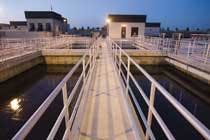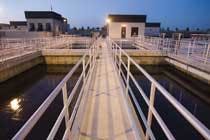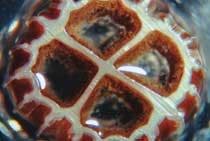The City and County of Broomfield, CO, with a population of 48,000, was in need of improved wastewater treatment to meet effluent guidelines for phosphorus, ammonia, nitrates and BOD removal from its wastewater.
During the winter of 2000-2001, a pilot study was used to prove the effectiveness of the AnoxKaldnes™ Hybas™ process. It was selected as the most cost-effective choice for the city and county among four other alternatives.
Broomfield's existing system consisted of an activated sludge system for BOD removal only. Because of an increase in projected flows from 5 to 8 mgd and the implementation of new effluent guidelines, expansion of the plant was required. The new effluent guidelines restricted the levels of phosphorus (<1 mg/L), ammonia (<2 mg/L), nitrates (<10 mg/L), and BOD (<10mg/L) that could be present in the water.
After a successful pilot test, the decision was made to install the Hybas™ process. The process alters the conventional activated sludge plant to increase the overall solids inventory. This is accomplished by using plastic carrier elements to provide surface area for additional biological growth, such as the nitrifier bacteria population, to meet the design requirements.
The carrier elements provide a home for the slowest growing nitrifying bacteria and keep them in the system. The bacteria live well protected in the media and provide for highly effective and consistent treatment.
The upgrade project was done within the existing tanks, thus allowing the facility to increase its treatment capacity without having to build any new aerobic activated sludge treatment volume.
In order to keep the carrier elements within the reactors, specially designed screens are used to retain the media but allow the MLSS to flow out of the basin and into the clarifier for settling. In addition, due to maintenance issues of fine bubble aeration systems with respect to cleaning and replacing domes, it was decided that the existing aerobic tanks were to be retrofitted with an AnoxKaldnes stainless steel aeration system to provide a) oxygen for bacteria, b) mixing energy to keep media in constant motion, and c) durability over the next 20+ years.
Results
Broomfield WWTP upgraded from 5.4 mgd to 8.0 mgd without having to increase aerobic tank volume. The plant now operates at a MLSS aerobic SRT of 3.5 – 4.5 days, withstanding winter temperatures of 55°F and maintains complete nitrification and total nitrogen of less than 10 mg/L. In addition, Broomfield operates with secondary effluent concentrations for BOD and TSS of <5 mg/L.





